Updated February 2024.
A 7 days Iceland itinerary for nature lovers – the best places to see Icelandic wildlife and beautiful scenery on an easy one week trip.
Dreaming of a special vacation, somewhere uniquely beautiful with stunning landscapes full of natural wonders? Head away from busy cities or sweltering beaches, and spend a week exploring Iceland, the land of ice and fire. A 7 day Icelandic itinerary is the perfect holiday for wildlife and nature lovers.
Iceland ranks as the world’s best destination for nature lovers. Imagine waterfalls cascading down volcanic mountains, glaciers and ice caves, hot-springs and geysers, black sand beaches, and pastures where horses and reindeer roam. Yes, 7 days in Iceland is enough to see the landmark sites, and there’s time to relax in the geothermal baths or go on a hike or two.
Enjoy watching the unique wildlife of Iceland during the day – Arctic foxes crossing the wilderness, whales and seals in the icy sea, or the rare puffins and gyrfalcons (the national bird of Iceland) which breed here. Then observe the natural phenomenona at night – the famous midnight sun and the aurora borealis which touch the sky with unearthly colours.
Discover the best way to see Iceland in 7 days with our complete insider’s guide.
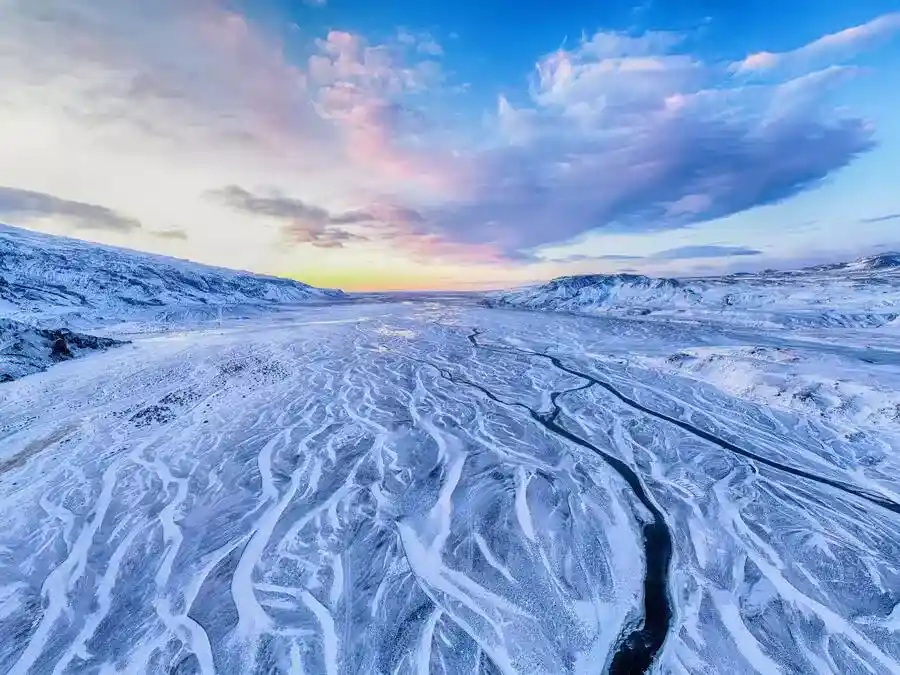
- Map of Iceland 7 Day Itinerary
- 7-Day Iceland Itinerary For Wildlife and Nature Lovers
- Tips for a 7 Day Nature Itinerary of Iceland
- Planning a 7 Day Trip to Iceland
- Ideas for Nature Trips around the World
Map of Iceland 7 Day Itinerary
Points of special interest and natural beauty that we mention in this 7 day itinerary are pinpointed on our interactive map of Iceland. Wildlife can be seen seasonally in different parts of the country. Zoom in to see road connections and calculate distances, if you’re planning a self-drive road trip of the island. Otherwise, base yourself in capital Reykjavik and do day tours or overnight stays.
7-Day Iceland Itinerary
For Wildlife and Nature Lovers
Authored by Iceland wildlife expert Niels Thomas.
While working in the office, you look outside and are greeted by the familiar sight of honking cars and screaming pedestrians. On your desk is a photograph of the mountains from the last time you went on holiday. It has been so long since you had a vacation, right? Well, there’s no better time to plan your next trip than now!
If you have time, extend your trip to Iceland with a flight over to neighbouring Greenland. These related posts, have lots of useful information:
* A useful guide to visiting Greenland;
* Travelling on the Greenland Coastal Ferry.
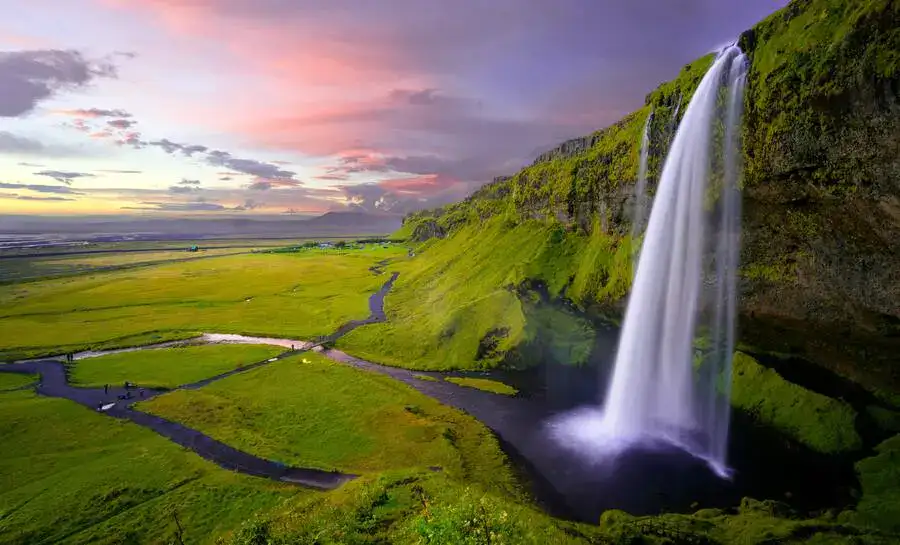
But where to? I recommend visiting Iceland, especially if you share a deep love for nature and wildlife. Just 7 days in this island nation will help you revive and reconnect with your inner self. Read my insider guide, book your flight tickets, and enjoy the most unique holiday destination in the world!
Iceland has lots to offer, but this volcanic island nation is best known for its contrasting landscapes and rare wildlife. We feel 7 days in Iceland should be enough to cover most spots, and you can check out our detailed itinerary below of the best places to visit.
Day 1.
Blue Lagoon – Brimketill – Kleifarvatn
Touchdown…
- The Blue Lagoon geothermal spa
- Sea rock pools at Brimketill
- Kleifarvatn Lake on the Reykjanes Peninsula
- Illahraun and Eldgjarhraun walks across lava fields
The most comfortable and popular way to arrive in Iceland is by plane to the capital Reykjavik city or Keflavik. Only 15-30 minutes from either airport is the famous Blue Lagoon, a geothermal spa in the southwestern part of the country.
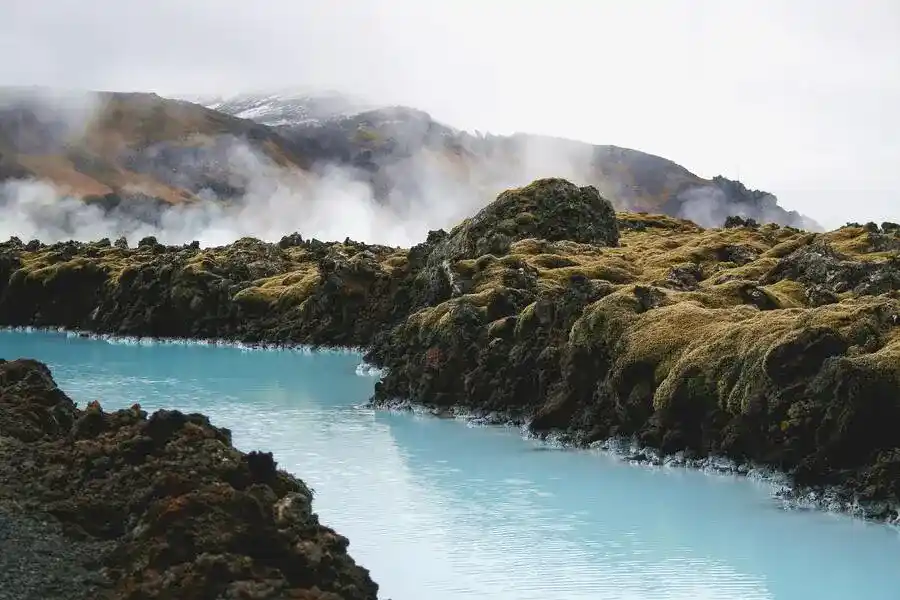
Open throughout the year, the Blue Lagoon attracts tourists from across the world, so please book your spot a few months in advance. It’s the most popular destination in Iceland. Once there, you can relax in the silica and sulfur-rich water, which has regenerative properties, or apply a silica face mask and enjoy the soothing effects.
Inside there’s a LAVA restaurant and café where you can treat yourself to cocktails, massages, and delicious meals. There’s also a small waterfall in the area where you can relax with a glass of sparkling wine. Entrance tickets for the Blue Lagoon spa cost from 66€.
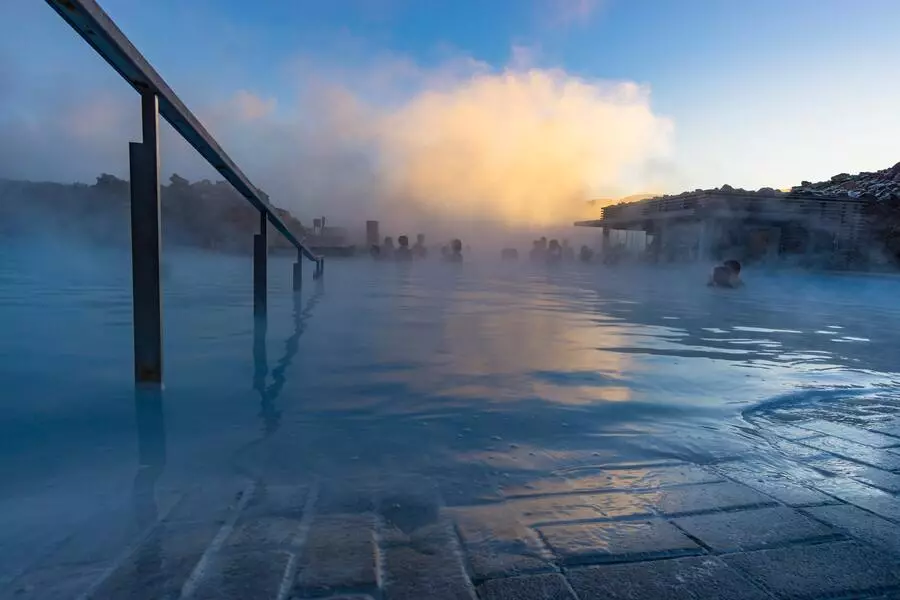
After spending 2-3 hours here, you can drive to Brimketill, which offers a panoramic view of the North Atlantic Ocean, and the black volcanic rock pools carved out of the shoreline. The sound of the waves and the crystal clear waters will soothe your soul. It takes just 15 minutes from Blue Lagoon to reach this scenic point by car.
Best of all, it’s free, and you can spend as long as you want just staring into the vastness of the ocean. But if you’re in the mood for exploration, head out to Kleifarvatn, the largest lake in the Reykjanes Peninsula, surrounded by lava rocks on all sides.

Nearby, there are trails through lava fields that are several hundred years old. Among these, the Illahraun and Eldgjarhraun hike which criss-crosses some of Iceland’s most picturesque volcanic terrain. It takes approximately 2.5 hours to cover the 9.5 km stretch.
Day 1 sets the tone for what’s to follow…
Are you interested in eco-friendly travel in Iceland? Then take a look at our related post on sustainable tourism in Europe.
Day 2.
The Golden Circle
Iceland’s Most Beautiful Scenic Route…
Drive around the Golden Circle which covers three of Iceland’s top attractions:
- Gullfoss Waterfalls
- Thingvellir National Park
- Haukadalur Geothermal Area
The Golden Circle is a 300 km loop within easy reach of Reykjavik. Tourists either book a day tour or drive around themselves. But remember, you will have to pay parking fees for private vehicles.
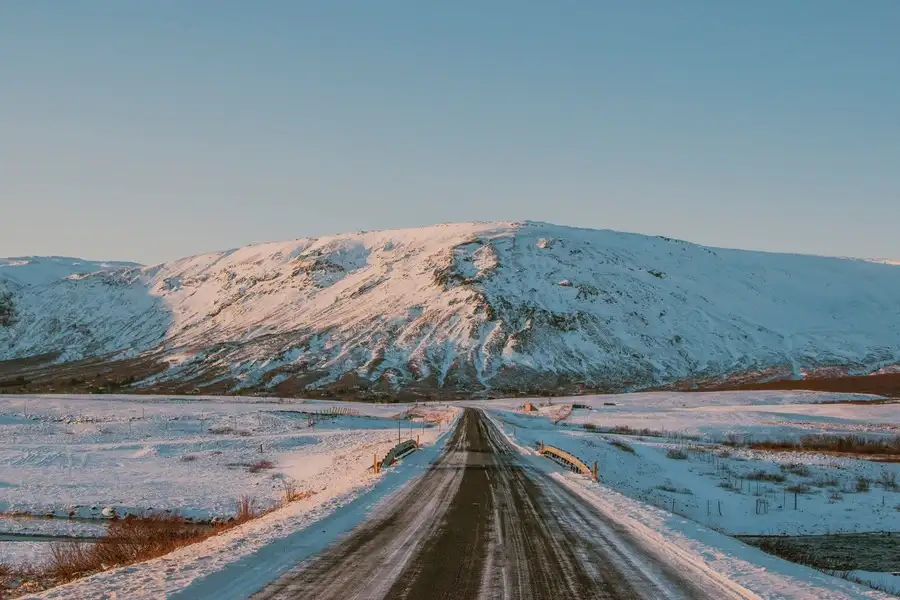
A. Geothermal Area
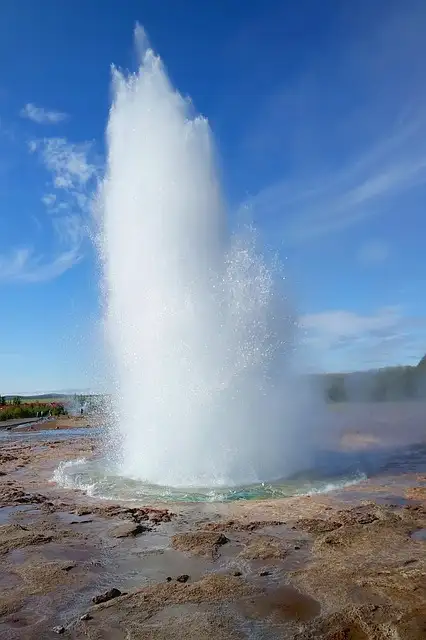
Start the tour at the Haukadalur Valley, which is rich in geothermal activity and has a popular geyser called Geysir (not very creative!).
This natural wonder is inactive, but there’s another geyser in the vicinity, Strokkur, spewing boiling water to great heights every 10 minutes.
There are other smaller geysers, fumaroles, mud pits, and hot springs to explore, while you can dine at any of the restaurants or cafés across the road.
B. Gullfoss Waterfall
From geysers, we move to the famous ‘golden waterfall‘, which plummets from 32 meters high into the Hvita River below. It’s one of the most beautiful waterfalls in Iceland.
This is the farthest point of Golden Circle, and you might see rafters paddling their way on the foaming and frothing waters.
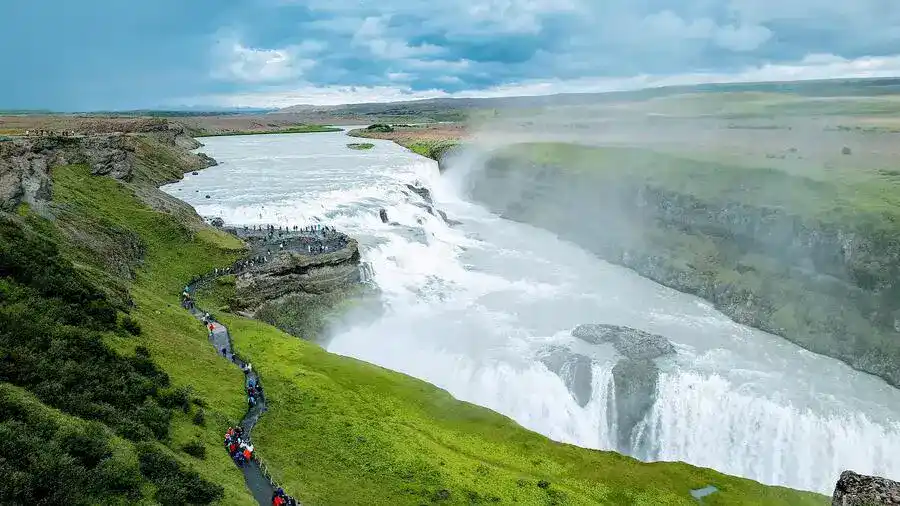
The waterfall originates from the Langjokull Glacier before cascading down two distinct falls into the gorge below. This entire area is surrounded by canyons possibly formed by glacial explosions. If you want to indulge in additional activities, contact a tour operator to climb the Langjokull Glacier or go snowboarding.
C. Thingvellir National Park
When circling back, do stop at Thingvellir National Park which is a UNESCO World Heritage Site and one of the most beautiful parts of Iceland. The park is located in a rift valley and is known for its jaw-dropping landscapes since it lies between the Eurasian and North American tectonic plates.
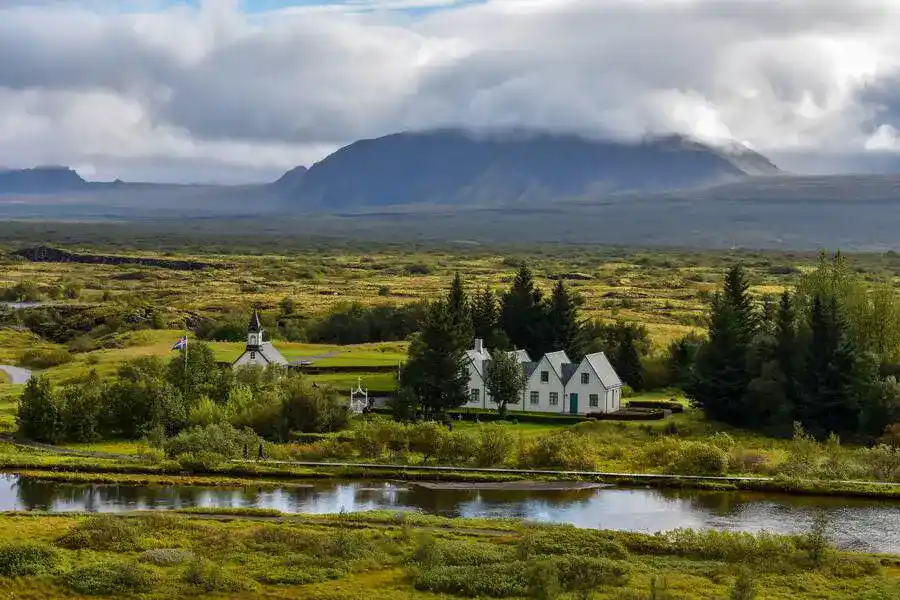
Tourists can go snorkeling and scuba diving in the transparent waters or explore the Almannagjá Gorge. But most importantly, it’s a haven for birdwatchers, so keep your eyes and ears open as you walk through the rift up to Oxararfoss Waterfall. If you’re lucky, you can spot the Red-Throated Diver, Red-Breasted Merganser, Rock Ptarmigan, European Golden Plover, or Great Northern Diver.
Iceland is the world’s safest country, followed by Ireland and New Zealand, according to the Global Peace Index. This makes it the ideal destination for family holidays and solo women travellers alike.
Day 3.
Icelandic Horses – Reindeer – Artic Fox
Santa’s Pet And A Shy Predator…
- Ride an Icelandic horse along the beaches, lava fields and lowland valleys
- Watch reindeer near the Jokulsarlon Glacier Lagoon
- Spot Arctic foxes in Hornstrandir Nature Reserve
Continue exploring Iceland’s awe-inspiring landscape and natural wonders but ditch the car on day three. Instead, book a tour on an Icelandic horse and travel around the country’s beaches, lava fields, valleys, and lowlands.
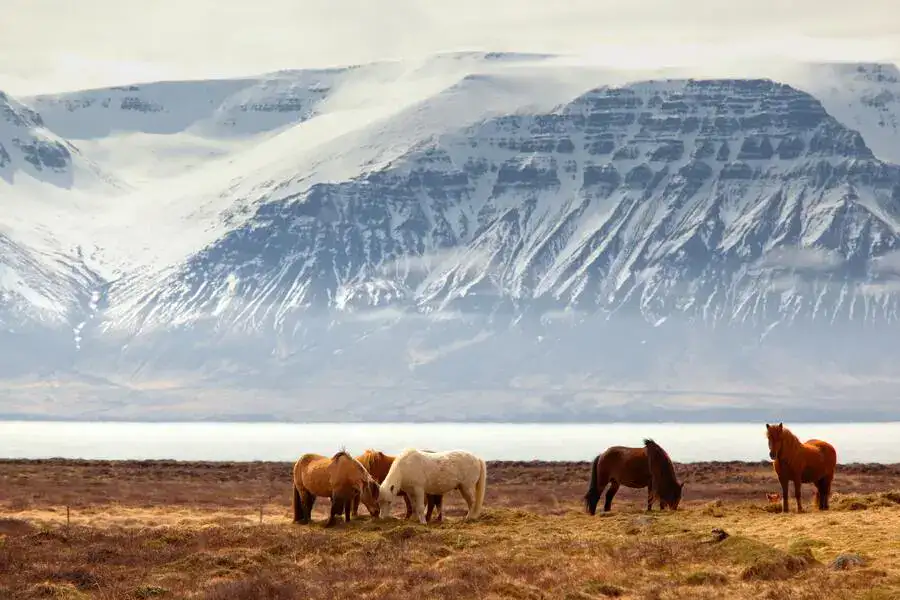
Their timid nature makes this horse species different, and they are much smaller than regular horses. These animals’ calm and tolerant demeanor guarantees complete safety, so they are perfect for children.
You can book a 30-minute horse ride or even longer for 63€ per person, while the rates are slightly less for children. If you want a one-on-one experience in horse riding, go to Gauksmyri Lodge, which is ideal for spending some family time while learning about these beautiful creatures.
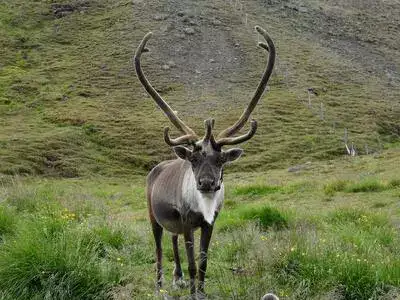
For an even more enthralling experience of Iceland’s wildlife, try to spot reindeer and arctic foxes.
Reindeers are mostly located in the Eastern Highland in Snaefell but come down to graze in winter. You can book a stay in a cottage from around 120€ per night in Vopnafjörður where Icelandic reindeer are easily visible, or travel to Hofn village or the Jokulsarlon Glacier Lagoon.
The Arctic Fox is more common, and as long as you have quick eyesight and loads of patience, you can spot these shy mammals. It would be best to visit the Hornstrandir Nature Reserve between May and July to have more chances to see these elusive animals.
The Hornstrandir Nature Reserve is located in the Westfjords. The best way to get there for a day trip is to take a 40 minute flight from Reykjavík to Ísafjörður with Icelandic Air (from 160€) and then catch a ferry across to Hornstrandir (approx. 170€ for a roundtrip).
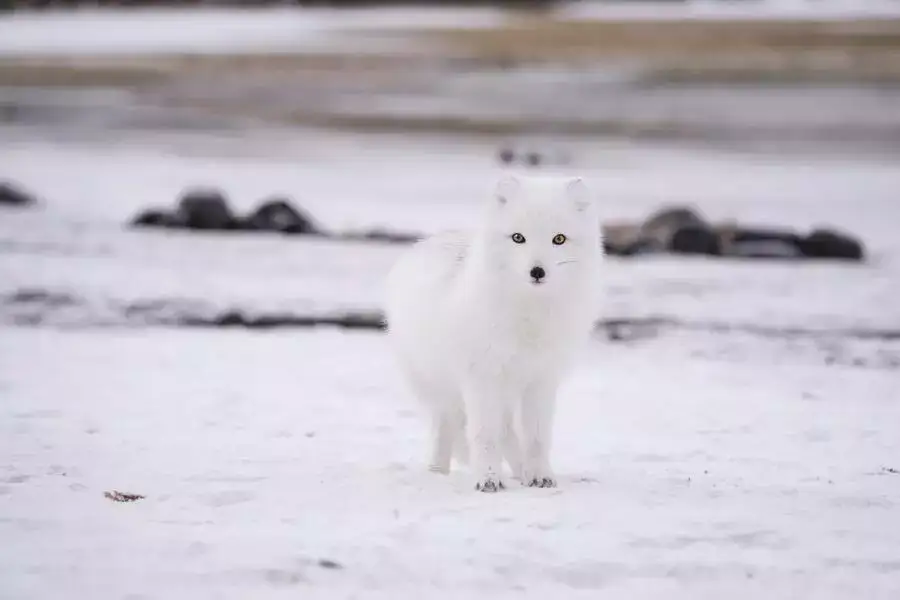
Day 4.
Whale and Puffin Tour – Northern Lights
- Whale and Puffin boat tours from Reykjavik
- See the Aurora Borealis at Thingvellir National Park, Kirkjufell Mountains, or the Asbyrgi Canyon
Dancing lights, inquisitive whales, and a rare bird…
The tour keeps getting better, and on day 4, you can take your wildlife experience to the next level by starting the day with a whale and puffin tour.
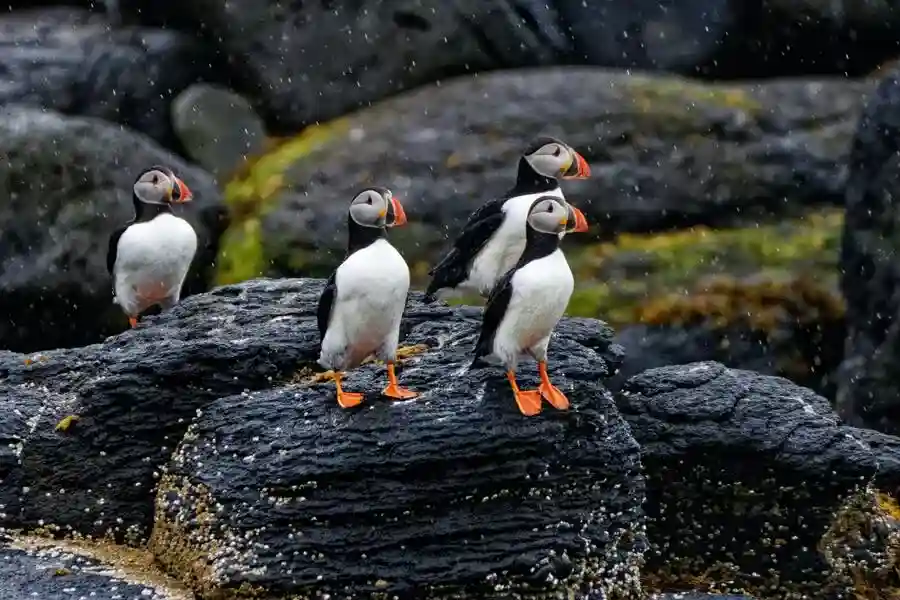
Over 50% of the world’s puffin population is in Iceland, and you can spot these cute, black and white birds resting across the rock face. There are guided tours from Reykjavik Harbour, mostly running from May to August, allowing you to observe the birds in their natural habitat. Prices start around around 50€.
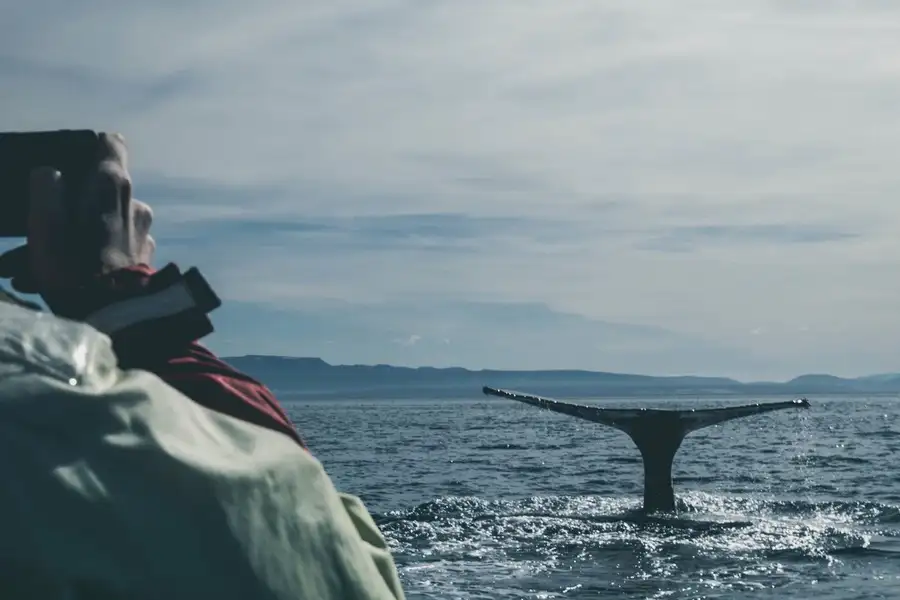
Your tour operator will then take you on one of the great ethical whale watching experiences in Iceland. Twenty different species of whales visit the country, attracting tourists from across the world. Read up on Whale Watching in Iceland and get up close with orcas, minke whales, humpback whales, and fin whales.
And what better way to sign off for the day than spending a night under the open sky while watching the northern lights. Aurora borealis is a rare phenomenon, and the atmospheric conditions must be just right to check this item off your bucket list.
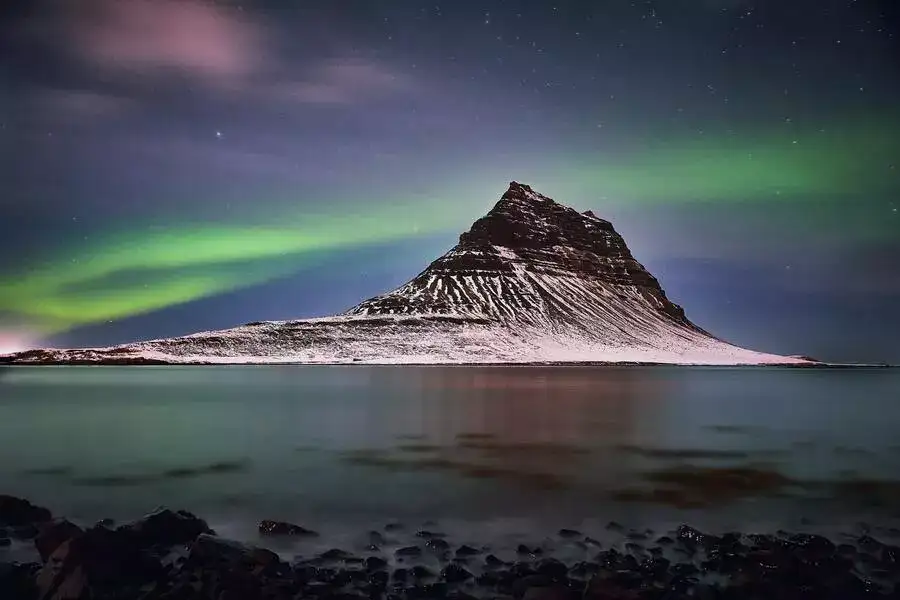
I recommend booking a stay in an isolated spot, such as a hotel in Thingvellir National Park, Kirkjufell Mountains, or the Asbyrgi Canyon. These areas are away from city lights, and you can request the hotel desk for a wake-up call when the dancing lights are visible. Some people also choose to drive around at night or go on a boat tour.
Visit Iceland between September and April for a guided Northern Lights tour (prices from 50€).
Day 5.
West Iceland
Magical World of West Iceland…
- Deildartunguhver Hot Springs
- Vidgelmir Cave
- Hallmundarhraun Lava Field
- Langjokull Glacier
After the first 4 days of your Iceland wildlife itinerary, it’s natural to feel a bit tired, so take your time on Day 5. You’re on holiday after all, and it would be best to sleep in a bit longer before starting the day’s tour at Deildartunguhver hot springs, Europe’s highest flowing hot spring.
You can view this natural wonder, where water flows at 180 liters per second, on the way to Vidgelmir Cave. Also, the temperature is at a constant 97 degrees Fahrenheit, so keep your distance. Here’s a titbit of information to tell your friends after exploring this place – the water in this bubbling hot spring even powers Icelandic homes!

Afterward, take a tour bus or drive from Husafell to the Vidgelmir Cave in Western Iceland’s Hallmundarhraun lava field. It’s not only one of the biggest caves in Iceland, measuring 1600 meters long, but it’s also one of the largest lava caves in the world. You must pass through a tunnel inside the cave to step into a magical world, much like Alice In Wonderland.
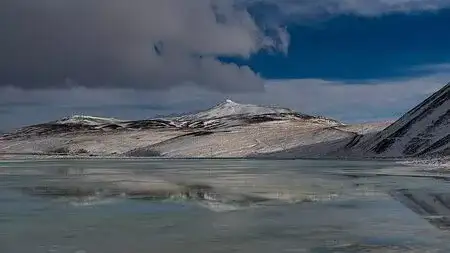
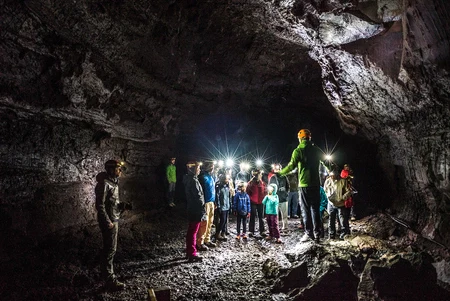
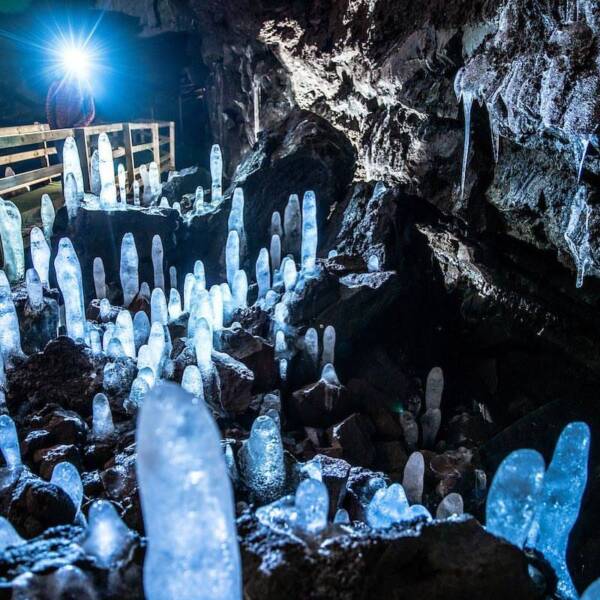
Countless icicles and rock formations are illuminated by vibrant colours, which makes the entire experience ethereal. At some point, the guide turns off the lights inside the cave to showcase the contrast between light and dark. This family-friendly 2-hour tour will cost you approximately 50€.
On the drive back, you can say hello to an old friend – Langjokull Glacier, locally known as the ‘long glacier’.
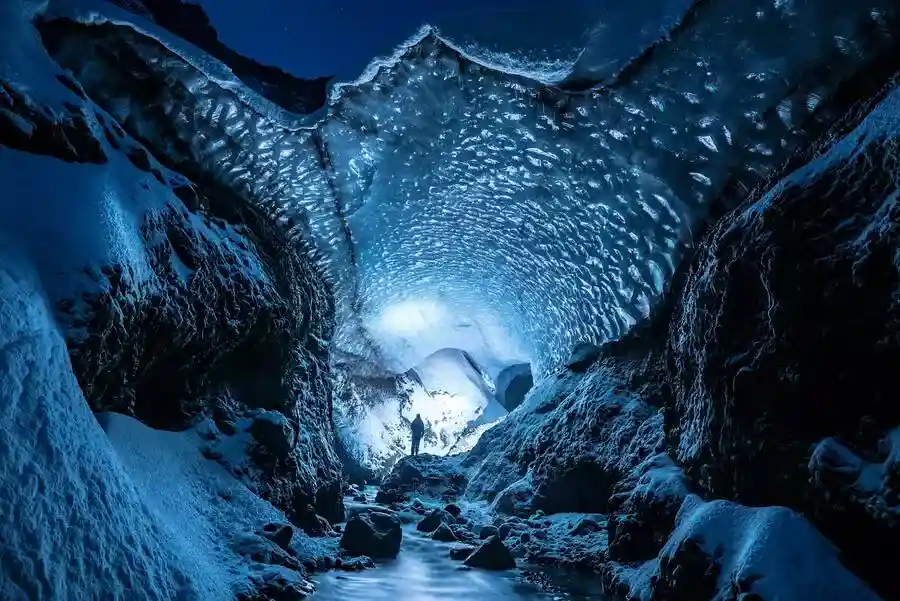
Want to pack more adventure into the day? Then, journey on up Klaki base camp and explore the ice tunnels underneath Langjokull Glacier. A four-wheel drive is best to get up the gravel track, otherwise it’s easiest to book a guided tour.
Day 6.
Snaefellsnes Peninsula and Westfjords
The Westernmost Tip of Iceland…
- Breiðafjörður Bay
- The Westfjords
- Gerðuberg Basalt Cliffs
- Olkelda Farm
- Seals at Tunga Beach
- Kirkjufell Mountains
- Kirkjufellsfoss Waterfall
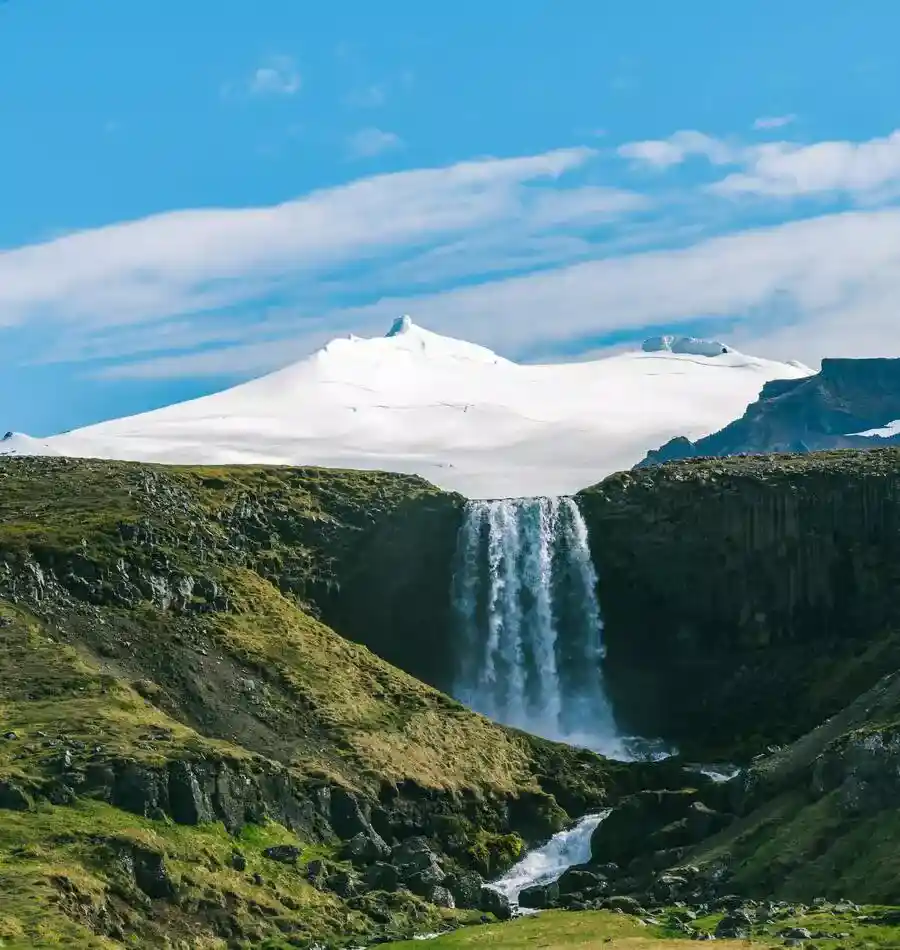
On the penultimate day, it’s time to get in as much sightseeing as possible before your holiday in Iceland comes to an end. We have lined up a trip to the Snaefellsnes Peninsula, one of Iceland’s most picturesque and action-packed places, complete with waterfalls, volcanoes, and scenic landscapes… and a boat over to the Westfjords!

* The map shows the road trip but we suggest getting the ferry ride across Breiðafjörður Bay from Stykkishólmur to Brjanslaekur.
Borgarnes is the starting point for your roundtrip of Snaefellsnes Peninsula, 76 km north of Reykjavik on route 54 ring road. This cute town has many restaurants, bars, and hotels, and it’s ideal for spending some time before heading to the Gerðuberg basalt cliffs. These cliffs lie just 30 minutes away from Borgarnes and the towering columns will take your breath away. They were formed by lava over millions of years and appear like a solid wall from a distance.
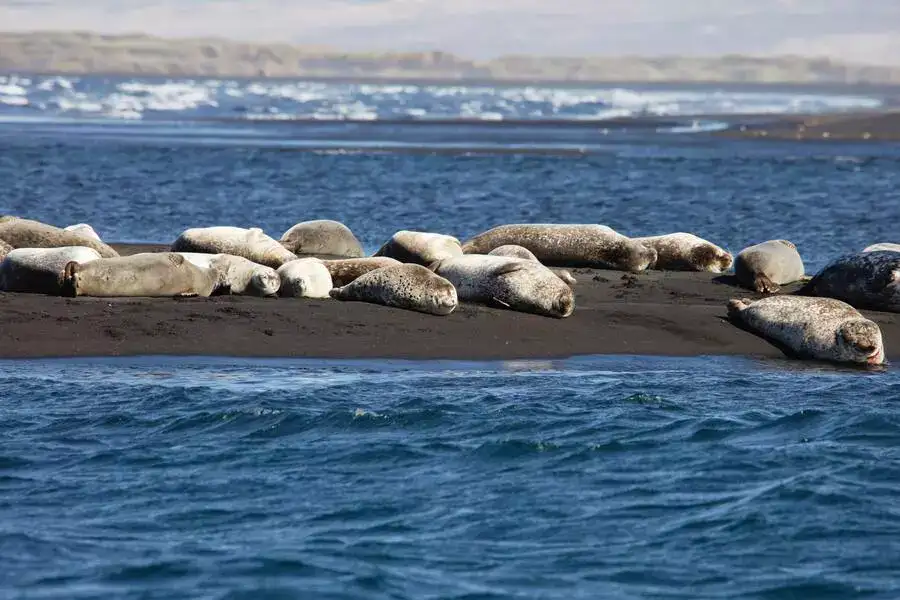
From there, you can drive around the peninsula to Olkelda Farm, which has a natural mineral spring rich in iron which turns the surrounding landscape bright red. Other interesting activities along the route include watching seals at the golden beach at Ytri Tunga and visiting Kirkjufell mountains, where Game of Thrones was shot.
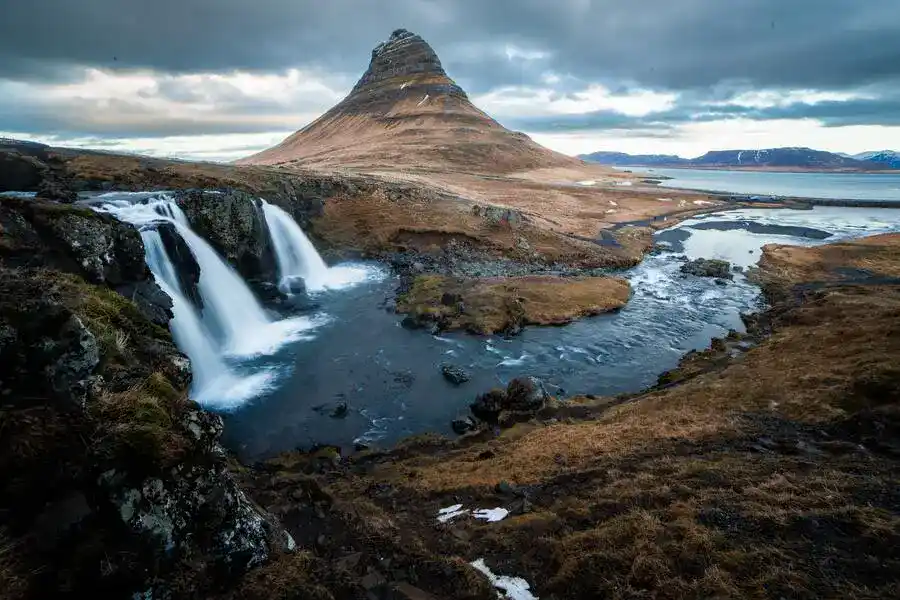
These mountains lie just outside Snæfellsjökull National Park and are adorned by the Kirkjufellsfoss waterfall nearby. If you have time, stroll through one of the many scenic trails and keep an eye out for local wildlife.
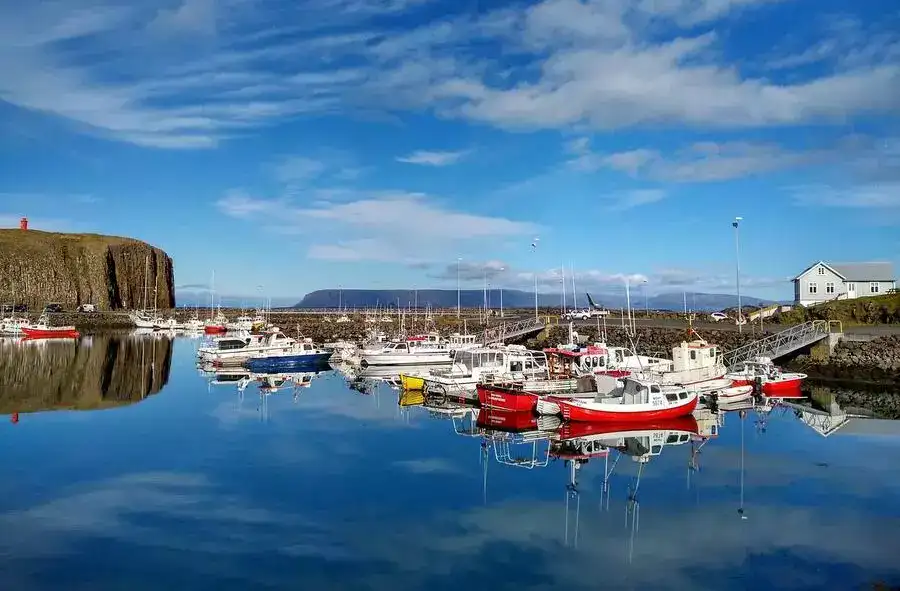
Carry on around until you arrive at Stykkishólmur, a village overlooking Breiðafjörður Bay. From here can take a ferry ride to the Westfjords and click beautiful photographs of the surrounding islands. The region is famous for its seafood and wildlife – look out for puffins, whales and seals as you sail across the bay.
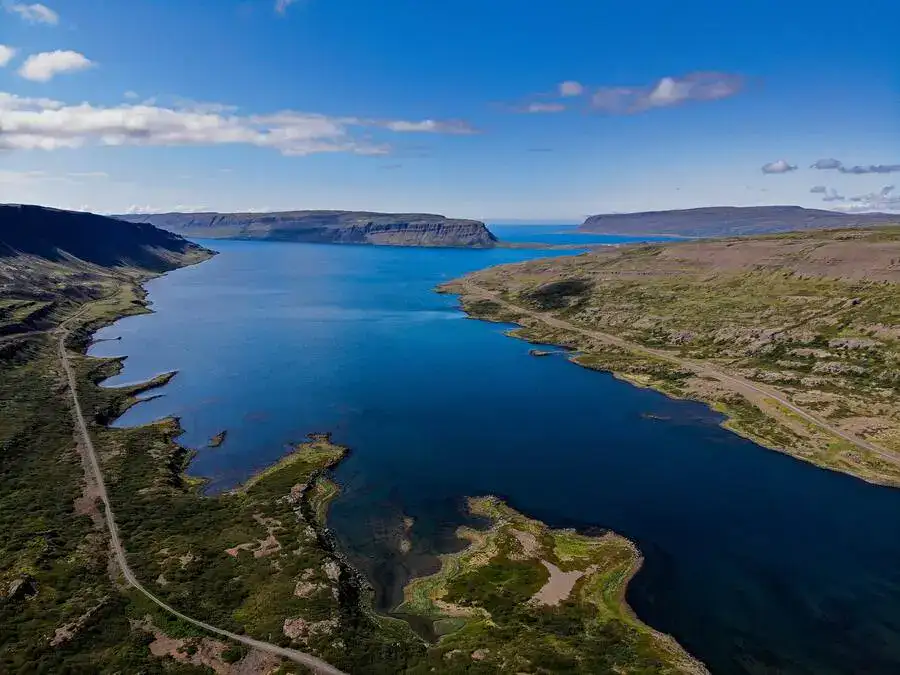
Ferry Baldur departs Stykkishólmu 09.00 and 15.00 daily (summer schedule from June 9 until August 24, see winter timings on their site). The trip takes 2 hrs 30 mins. Returns from Brjánslækur at 12.00 and 18.00. If you want to catch the morning ferry, drive straight from Borgarnes to Stykkishólmur via route 58. This is a popular route so bookings are advised.
Day 7.
Reykjavik – Grotta Lighthouse – Laugardalur Park
Adieu Iceland…
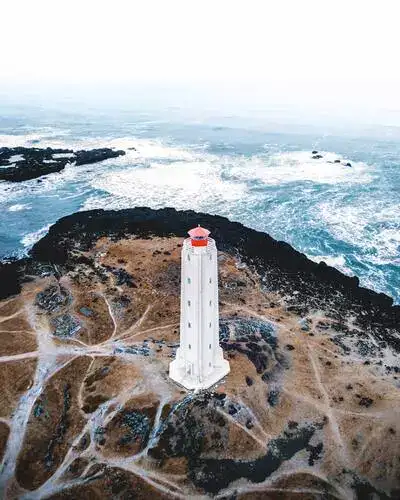
- See the sights of Reykjavik
- Arctic flowers in Laugardalur Park (Family Park and Zoo)
- Last sea views from Grotta lighthouse
The final day in Iceland may not include much sightseeing because you have a plane to catch. However, you can go to Grotta lighthouse for one last glimpse of the ocean, city, and nature in the surrounding area.
Another spot to stop on the way would be Laugardalur Park. The botanical gardens are here where you can see Arctic flowers in bloom, and also a Family Park and Zoo. Make sure you have enough time on your hands – this place will be difficult to cover before a morning flight.
If you’re not leaving Iceland until evening, you can take a morning tour of Reykjavik, and then relax at Blue Lagoon in the afternoon if there wasn’t time to do this on your first day.
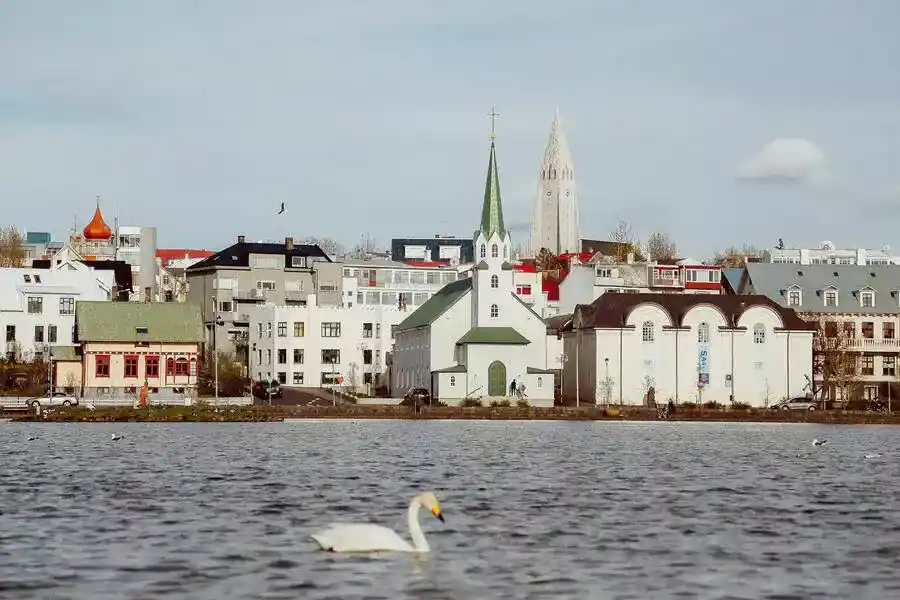
- If you’re travelling from North America, most flights are overnight, so you’ll be arriving in Iceland around 6am to 8.30 am, and therefore will have plenty of time to enjoy the first day.
- From Europe, there’s a wider range of flight times which gives you greater flexibility.
- Blue Lagoon has a private shuttle bus to/from Iceland’s main airports, which means you can go there directly on arrival, or at the end of your trip before leaving.
- Add on an extra day to fully enjoy Reykjavik.
Tips for a 7 Day Nature Itinerary of Iceland
Final goodbye…
When flying out of Reykjavik, get a seat on the right side of the plane to view the stunning landscapes from several thousand feet high.
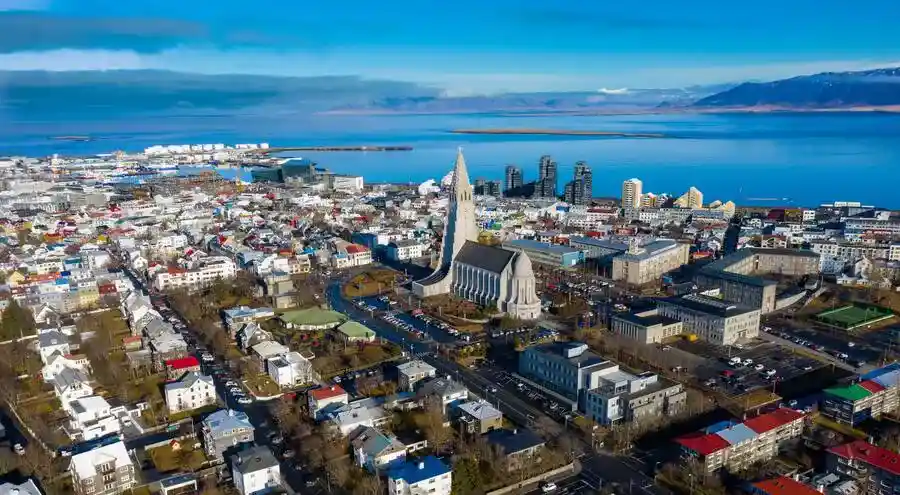
As the buildings become smaller and Iceland vanishes below, start planning your next trip to Iceland because there’s so much more left to uncover. The best time to visit Iceland would be in summer, between June and August, but winter has its charm of reindeer, Arctic foxes, and northern lights.
Another advantage of visiting later in the year as the prices are lower because it’s the off-season. But one thing is certain – Iceland is accessible all year round and will mesmerize you anytime you visit.
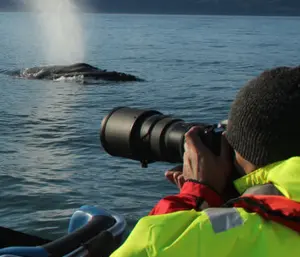
About the Author
For the last 17 years, Niels Thomas has been working as marine mammal specialist and wildlife expert. With his work he focuses on aquatic wildlife conservation in Iceland. Protecting whales, dolphins, seals and manatees and educating the public has always been a top priority for him.
* 2024 prices mentioned above are a rough guide, quoted in Euros, and subject to change.
Useful Info for Visiting Iceland
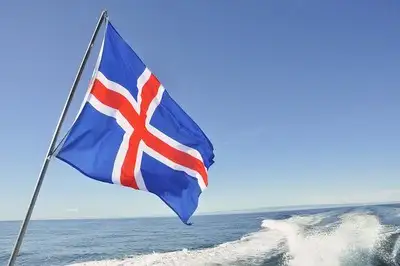
Currency: Icelandic króna
Official Language: Icelandic
Although English is commonly understood in Iceland, it’s always polite to learn some friendly words in the local language. For example: Góðan daginn is ‘good morning’, and Takk fyrir is ‘thankyou’.
Time zone: GMT (+1 hour in summertime)
Weather, Average Annual Temperatures and What to Wear in Iceland
Weather in Iceland is variable, although it’s not always as cold as people think with temperatures hovering around freezing point on winter nights, but rarely going much below. It’s best to bring light layers of clothing and good walking shoes (warmer fleeces, hats, gloves and boots in wintertime) and a waterproof, windproof jacket and trousers, as it can be wet and windy.
| Month | Daytime | At Night | Month | Daytime | At night |
| January | 3° | -1° | July | 15° | 10° |
| February | 4° | -1° | August | 14° | 9° |
| March | 4° | -1° | September | 11° | 7° |
| April | 7° | 1° | October | 8° | 3° |
| May | 10° | 4° | November | 5° | 1° |
| June | 13° | 8° | December | 3° | -2° |
Airports, Flights and Transfers in Iceland
Keflavik International Airport (KEF)
Most international flights arrive in Keflavik International Airport, which is located 50 km from Reykjavik. From here you can get an airport bus transfer into Reykjavik city centre with FlyBus (which you can also book to selected hotels), hire a rental car or arrange to be picked up by a tour.
Reykjavik Airport (RKV)
Reykjavik Airport is located 3 km from the city centre which you can get to by public bus. However, it’s only a 30 minute walk away. Car rentals can also be booked from the airport.
Transfers to the Blue Lagoon
There is a time-saving private coach service that goes to the Blue Lagoon, directly from both airports, Reykjavik city and selected hotels which can be booked with them on Destination Blue Lagoon.
Isafjordhur Airport (IFJ)
Isafjordhur Airport is a regional airport located in the Westfjords. Once again, hire a car from the airport to get around or use the scheduled bus service which runs to Ísafjörður, Hnífsdalur and Bolungarvík coinciding with Air Iceland Connect flights.
Flights to Iceland
Scheduled flights to Iceland are operated by some 25 airlines which fly to over 60 destinations around the world. There are direct flights from the majority of European countries, and from North America.
Examples of flight times from Europe: London 3 hours, Berlin 3 hours 45 minutes, Barcelona 4 hours 30 minutes; Examples of flight times from the USA and Canada: Newark 5 hrs 30 mins, Chicago 6 hrs 30 mins, Toronto 6 hours.
Planning a 7 Day Trip to Iceland
It’s definitely worthwhile booking a couple of wildlife tours for your Iceland trip. In fact, you can see the whole island with a tailor-made private tour but this would be the expensive option. Tourist excursions are good and more pocket-friendly, although you’ll be limited to the itinerary and timings. Driving for 7 days can be tiring, and stressful for anyone not used to the terrain and unstable weather.
Seeing Iceland by Coach, on Tourist Excursions, with a Private Tour, Boat Trips or Ferry
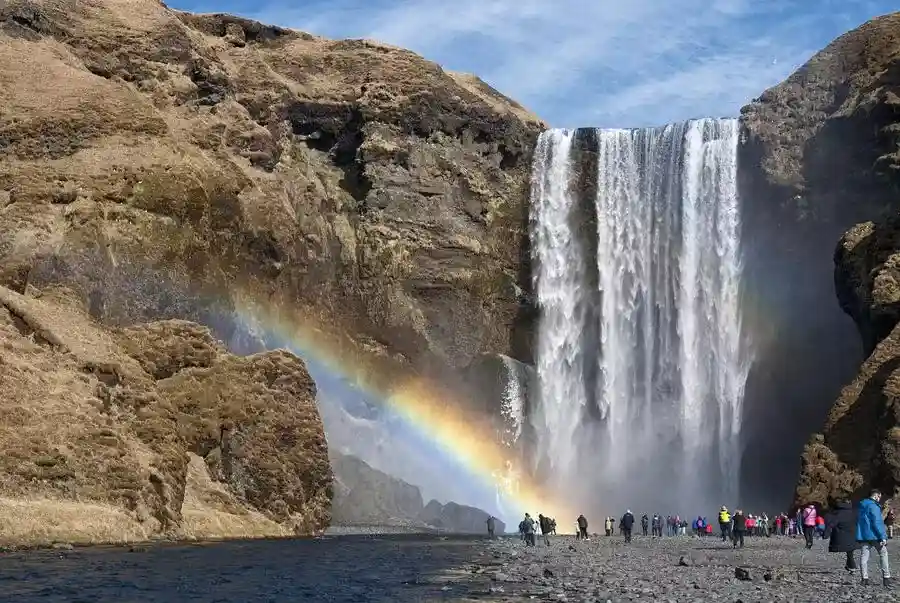
A relaxing and fun way to enjoy the activities that YOU want to do is an easy-going combination. Get a transfer from/to the airport, and the official bus to Blue Lagoon. Car hire to reach the National Parks, the Golden Circle, and landmark sites – or just go on coach tours if you find that simpler.
Personalised or small group tours are best to spot wildlife, and a boat trip from Reykjavik habour to see the whales, puffins and seals. Summertime is perfect for snorkeling or horseriding, and in winter this can be swapped for husky sledding.
Base yourself in Reykjavik, then take day trips out, with a couple of overnights to places further away from the capital, and to see the northern lights in a dark environment. You can join group walks or drive out to the trail head for a more solitary hike. Expert mountain guides are also available.
A guided walk of Reykjavik is a way to see the sights of the capital, or the typical hop-on-hop-off bus. However, it’s a small city and easy to wander around on your own. A culinary tour is cool, and the ultimate introduction to local food and drink.
Getting around Iceland by Car or Campervan
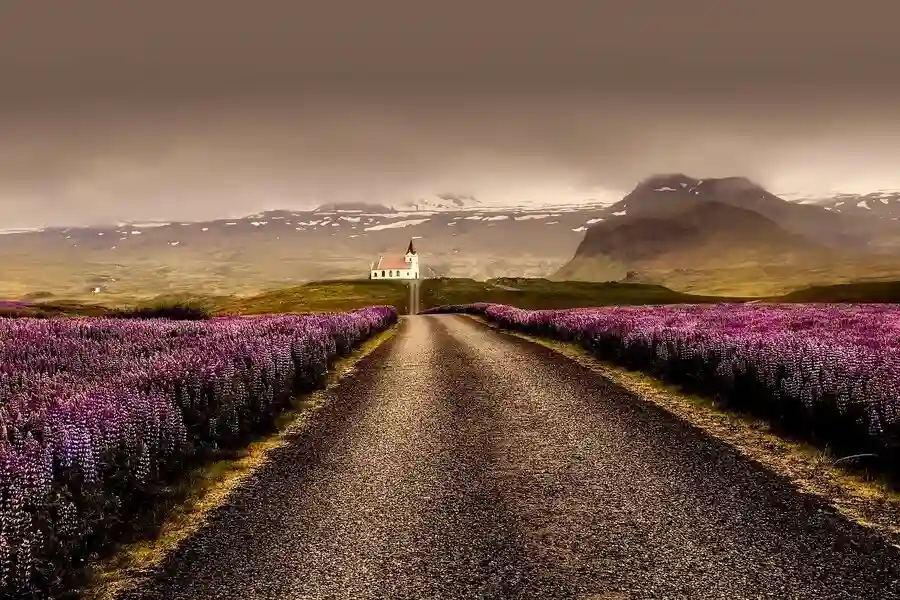
Highway 1 is the main ring road that circles Iceland. Although it’s feasible to drive the entire 1322 km route in a week during summertime (2 weeks in the winter), this wouldn’t leave time to observe the wildlife and unique scenery inland or at sea. After all, this isn’t a race to tick places off of a must do list, but an experience to enjoy the extraordinary nature experience that Iceland offers in a sustainable way.
Road Distances in Iceland
Driving Normatives and Points to Bear in Mind on an Iceland Road Trip
- Hiring a car in Iceland gives you more freedom, to see places off the usual tourist path at your own pace.
- Prebook a rental car from the airport, or in Reykjavik city – best option if you don’t want the vehicle for your entire stay.
- Take into consideration the price of petrol – check current prices on Iceland Gasoline Prices.
- Iceland drives on the right-hand side of the road (same as the US and the majority of Europe, excepting the UK).
- An International Driver’s License is not required for Iceland – take your passport, actual driver’s license, and credit card.
- Insurance is mandatory, double-check your car rental policy (sufficient coverage for extreme weather conditions, etc.).
- All passengers must wear seatbelts, under 12s are required to sit in the back, kids smaller than 135 cm need a car seat.
- Headlights should always be turned on whatever time of day.
- Iceland speed limits: 50 km in towns, 90 km on paved roads outside city limits, or 80 km along dirt/gravel roads.
- ‘F’ roads are marked gravel tracks where you’ll need a 4×4 vehicle.
- Off-road driving is illegal in Iceland.
- Campervans must park at an authorised campsite overnight.
- Wild camping in tents is allowed in many places, excepting protected countryside.
- Call 112 if there is an emergency.
- Particularly in winter, check the general weather forecast beforehand and local conditions before you set off every day.
- Make sure you have a full tank, and where petrol stations are located along the route if driving to remoter areas.
Final Thoughts for Planning your Trip to Iceland
Finally, the seasons influence the way of life in Iceland and the ever changing scenery. Although this is a beautiful country anytime of year, do plan for summer or winter activities, and optimal times of year to see the different wildlife.
If you’re going to take excursions, book your a trip with a certified and sustainable local Icelandic company which promotes responsible tourism.
Ideas for Nature Trips around the World
Alaska, Canada and New Zealand are countries of extraordinary natural beauty, destinations that match the icy wonderness of Iceland. See our popular posts on cool nature spots to visit around the world.
A Nature Lover’s 7-day Itinerary for Alaska
A nature lover’s 7 day itinerary for Alaska. Discover why you should visit Alaska once in a lifetime, where to see nature and wildlife, how to get around, where to stay and best times of year to go.
7-day South Island Itinerary for Nature Lovers (New Zealand)
Our helpful New Zealand South Island itinerary: a 7-day nature-lovers itinerary to see the most beautiful country in the world.
South Island Road Trip (New Zealand Campervan Itinerary)
Want to explore the incredible landscape that is New Zealand’s South Island by campervan?
This 14 day road trip itinerary will take you through some of the most impressive natural attractions and cities in New Zealand.
Awesome Places to Visit in Alberta (Besides Banff & Jasper)
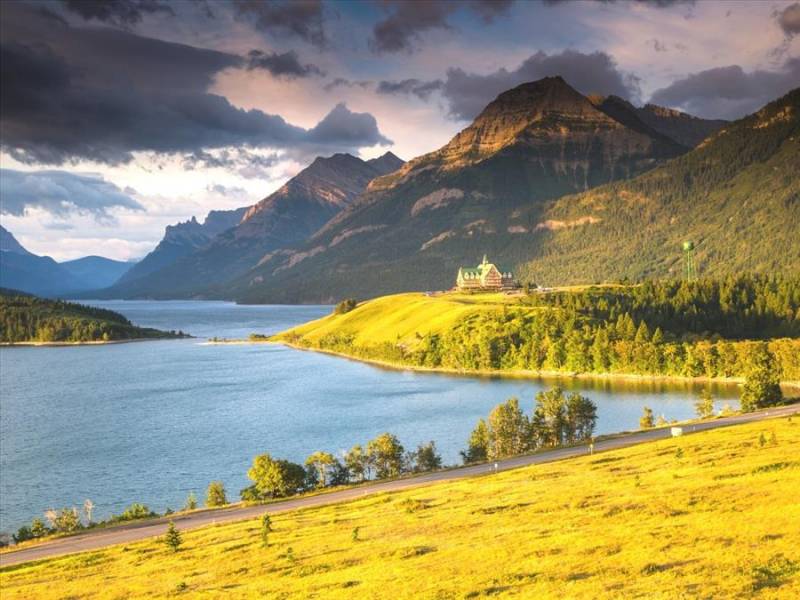
Alberta is one of Canada’s 10 provinces, a vast land of diverse landscapes where you can find snow-capped mountain peaks, rolling grasslands, dinosaur-bearing badlands, and unending boreal forests.
Best Women-Only Tour Destinations
See what to do and how to tour these top destinations for female travelers: Iceland, Spain, Italy, and Tanzania…
Discover the World with![]() the blog with a focus on independent travel
the blog with a focus on independent travel





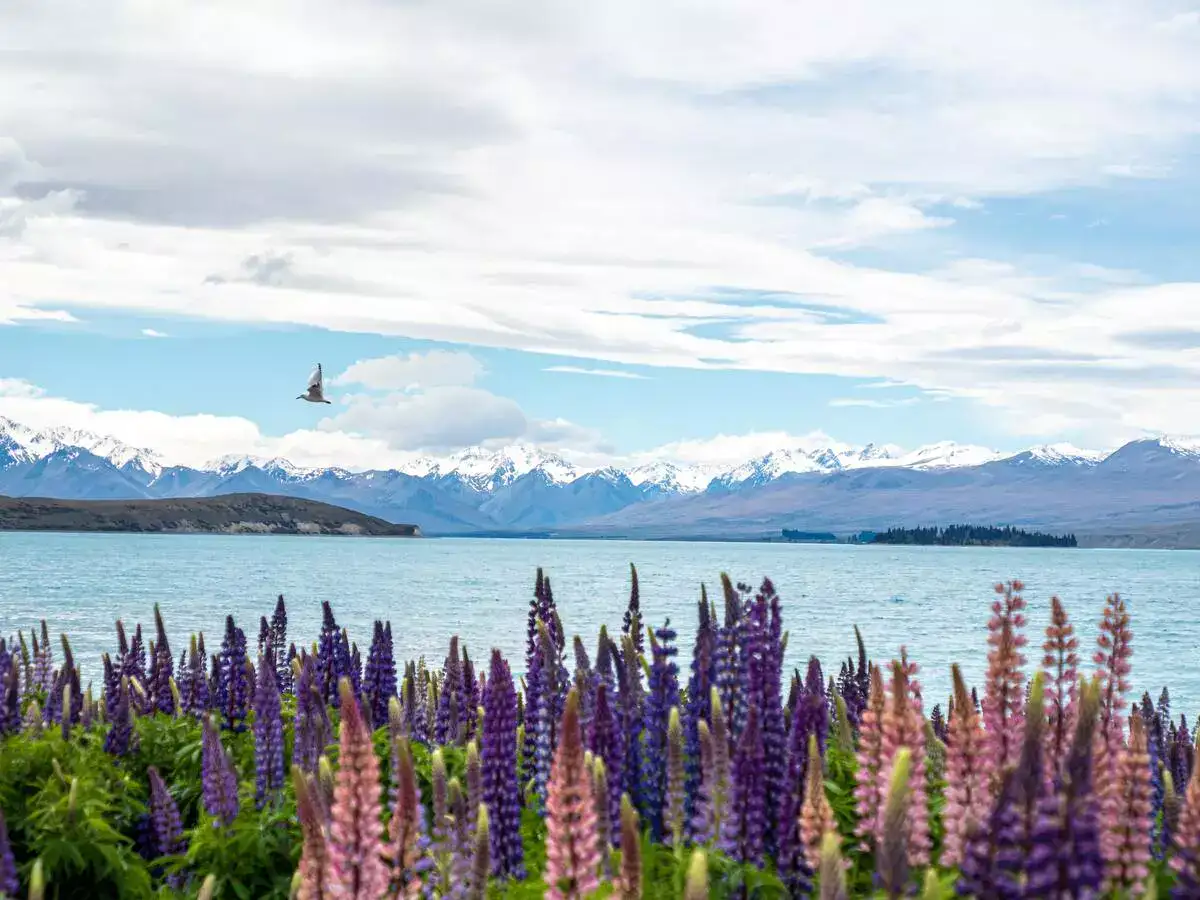
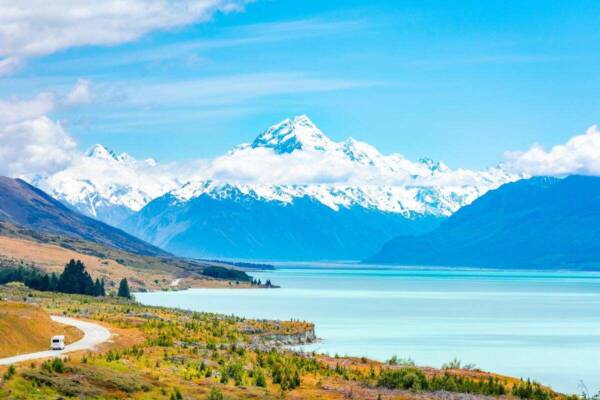
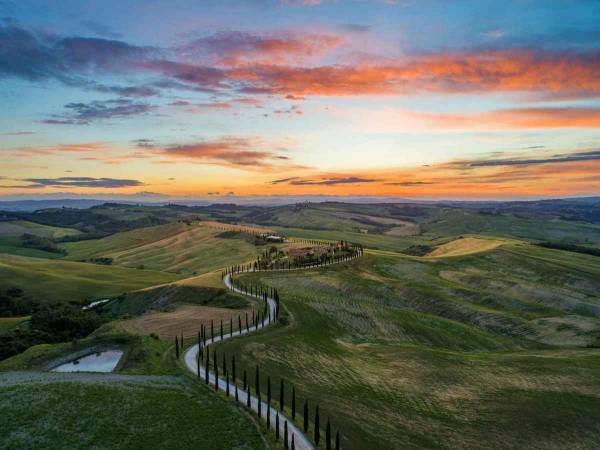
Your pictures are simply stunning!
This 7-day itinerary is perfect for first-time visitors to Iceland! There are just so many wonderful sites to see and exciting things to do. Thank you very much for sharing such a detailed post!